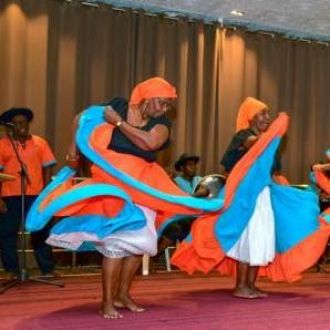
If you have ever been to Mauritius, it is nearly impossible for you not to have heard of the séga or attended a performance. Foreigners particularly love it. But for those who do not know, the séga is a music genre typical of the Mascarene islands and combines singing and dancing. Let’s talk about it, even more since the ‘séga tambour’ of the Chagos (a group of islands located at some 1,800 kilometers from Mauritius) has hit the headlines of Mauritian news at the moment.
The victory of the “Séga Tambour” at the UNESCO committee
On the 5th of December last, during the opening ceremony of the 14th session of the Festival Kreol in Mauritius, the new President of the Mauritian republic, Prithivirajsing Roopun, shared his wish to see the UNESCO’s List of Intangible Cultural Heritage include the “séga tambour” of Chagos, as is the case for that of Rodrigues.
His wish has come true; the “séga tambour” of Chagos forms part of the well-known list since Tuesday 10 December last. The 14th session of the Intergovernmental Committee for the Safeguarding of the Intangible Cultural Heritage was held at Bogota, in Colombia, during which the music genre has received the prestigious place.
Seeing their culture and history receiving such an honour has caused the Chagossians to feel much proud. They expressed their immense joy through a warm welcome to the Mauritian delegation that attended the committee upon their arrival in Mauritius, to the sound of the “séga tambour”.
The delegation was composed of the Mauritian Minister of Arts and Culture, Avinash Teeluck, members of his ministry, as well as the leader of the Groupe Réfugiés Chagos (GRC), Olivier Bancoult.
It can be certainly said that the voice of the Chagossians will never stop resonating.
Origins of the Séga
You may be familiar with the performance of the séga during which a man sings with a ravane in hand and women wearing colourful skirts dancing around him. However, the séga is not just a form of entertainment.
It is a music genre full of emotions. Its origins can be traced back to the 18th century, when colonisation, slavery and sugar plantations were relevant. The séga was the means that the African slave, who was transported to Mauritius and to the Chagos to work in sugarcane fields, had found to express his happiness and sorrows, to relate his story.
The ravane, the maravane (or kayamb) and the “triangle” are some main music instruments used for the séga. The first-mentioned is a staple in the music. It is circular in shape, made of Chinese guava tree wood, over which goatskin has been stretched. It should be heated before being played.
The maravane comes from East Africa and is used mostly by inhabitants of Réunion island in the maloya, another music genre related to the history of the island. The music instrument is shaped like a raft, made of a wooden frame filled with seeds, over which the dried stems of sugarcane flowers are fixed using nails.
As for the “triangle”, it has not always been a séga instrument. History relates that slaves used the sickles they used at work in order to produce the sound the “triangle” does. However, since the sickle would cause injuries and even the death of some slaves, the masters brought them “triangles” from Europe.
This is how the “séga tambour” was passed on from one generation to another one, until it formed part of the UNESCO’s list of Intangible Cultural Heritage.
